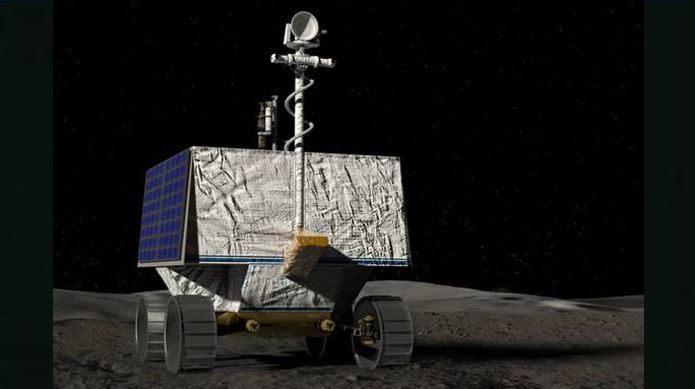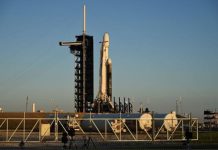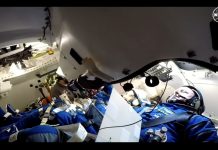
June 11 (UPI) — NASA has selected Pittsburgh-based Astrobotic Technology to deliver a new lunar rover, the VIPER, to the south pole of the moon in late 2023 to hunt for water ice, NASA Administrator Jim Bridenstine announced Thursday.
NASA considers VIPER to be the first resource-mapping mission on the surface of another world. It is intended to prepare for the new Artemis human missions to the lunar surface, planned for 2024.
“We’re doing something that’s never been done before — testing the instruments on the moon as the rover is being developed,” Thomas Zurbuchen, NASA’s associate administrator for science, said in a virtual press conference Thursday morning.
He said the rover and other exploration missions leading up to its landing will help reveal “the moon’s vast scientific potential.”
Ultimately, the rover is aimed at developing a sustainable, long-term robotic and human presence on the moon as part of the Artemis program.
Astrobotic will provide all services, including launch and landing on the moon, as part of NASA’s Commercial Lunar Payload Services initiative. John Thornton, the CEO of Astrobotic, declined to say what launch provider his firm would select.
NASA said the mission is estimated to cost $199.5 million, but that might be adjusted. Under NASA’s new focus on commercialization of space exploration, Astrobotic’s contract will reflect the total mission cost, and the company might subcontract some work.
Astrobotic is developing a lunar lander system, called Peregrine, privately to deliver experiments and other technology to the moon for private companies, governments, universities, non-profits. The company claims it can do so at roughly $2.3 million for every two pounds.
NASA selected Astrobotic in May 2019 for a $79.5 million contract to deliver lander payloads to the moon in 2021 — also in preparation for crewed missions. The company plans to send rovers before the VIPER mission, Thornton said.
“The rover will no doubt be a historic mission … and could have far-reaching implications” for the future of space exploration, Thornton said during the press conference.
NASA hasn’t sent rovers to Mars, and landers to the moon, but hasn’t sent a rover to the moon since the Apollo era.
About the size of a golf cart, the VIPER rover will attempt to locate the most promising ice reserves. It is designed to maneuver through craters, rocks, gravel and dust.
NASA says the rover’s components are designed to withstand lunar dust, blasts of cosmic rays and dramatic swings in lighting and temperature.
VIPER will be much closer to Earth than rovers on Mars, where communication signals are delayed by about eight minutes. On the moon, with a delay of only seconds, NASA hopes to control the rover in real-time or close to real time, agency officials said Thursday.
That might include allowing members of the public to control parts of the rover for brief periods, Zurbuchen said. He didn’t specify who that might include.
“VIPER can lift each of its wheels independently, almost like feet, and use them to dig into and sweep along the surface. This gives it a swimming-like motion capable of pulling the rover out of even very soft soils,” according to NASA’s mission description.
VIPER stands for Volatiles Investigating Polar Exploration Rover.
The most recent lunar rover was sent on a Chinese mission launched in 2018, which landed a rover in January 2019 on the far side of the moon.
Astrobotic was founded in 2008, spun out of Carnegie Mellon University in Pittsburgh by robotics professor William “Red” Whittaker. Her previously had won a $2 million prize for the university through a government-sponsored driverless car challenge.
The company received early funding from venture funds Space Angels, based in New York City, and NewSpace, in Salt Lake City. Astrobotic partners with such firms as international delivery firm DHL and heavy equipment manufacturer Caterpillar.
Astrobotic is pursuing a $30 million Google Lunar XPRIZE to land rovers on the moon and already has received $1.75 million as a milestone award in that competition.





